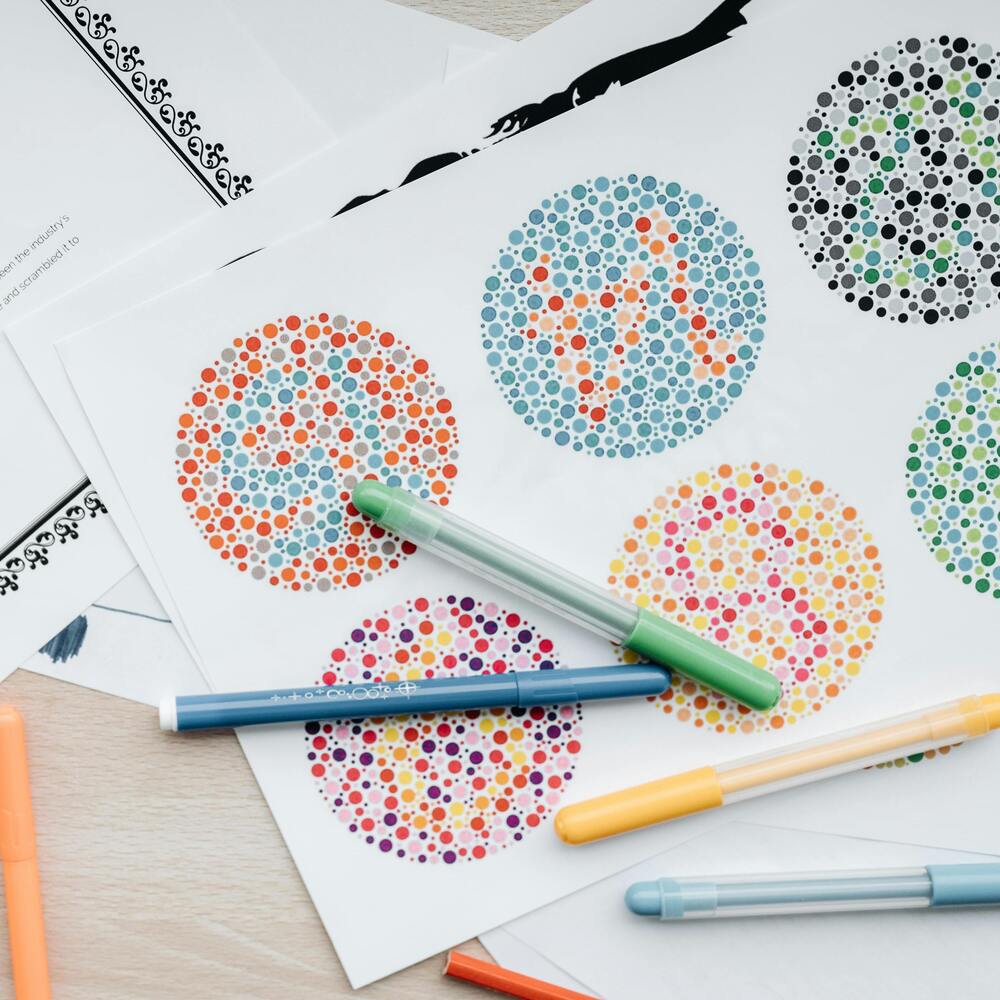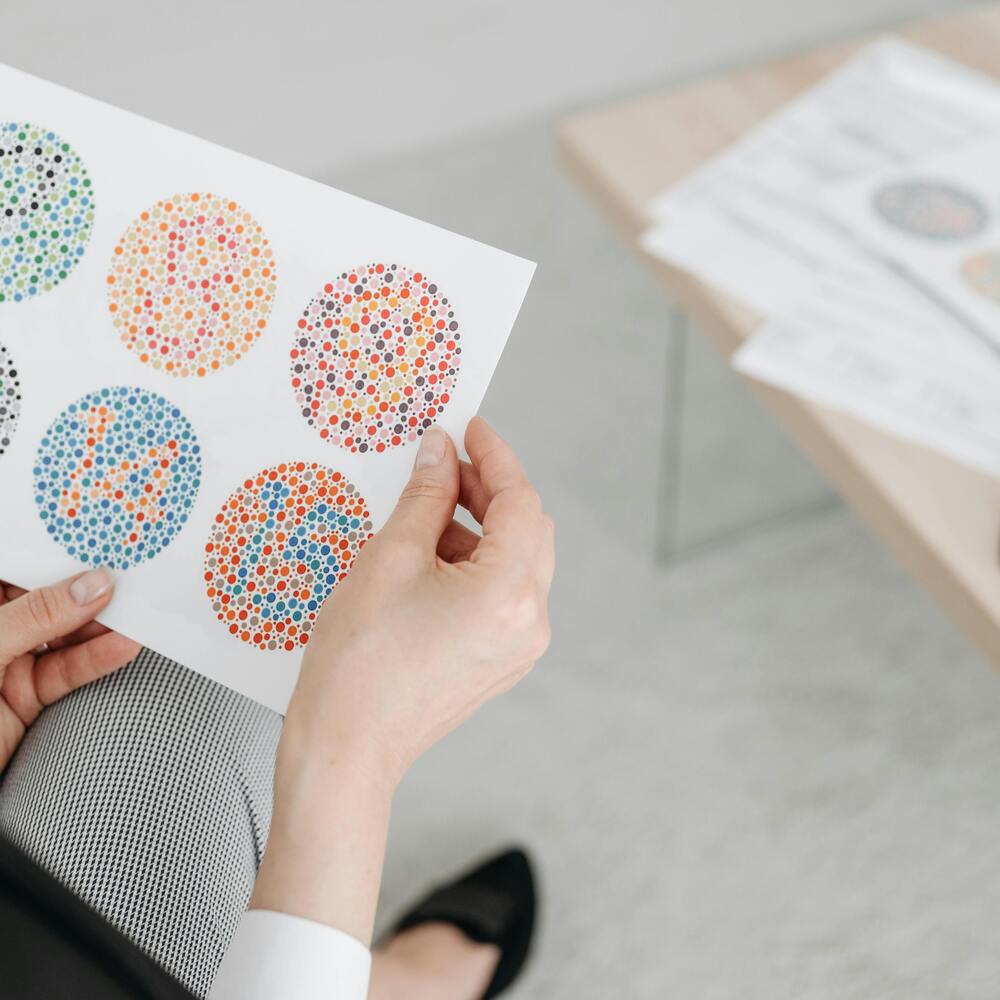Blindness Test
Discover a range of free tests to check for color blindness and visual acuity. Better understand your vision with fast, accurate results.
Quickly assess your color vision and detect various types of color blindness with our comprehensive test.
Identify red-green color blindness accurately using the widely recognized Ishihara Test.
Evaluate your ability to perceive subtle color differences accurately with the Color Hue Test.
Precisely diagnose red-green color deficiencies using the detailed Anomaloscope Test.
Get rapid and precise screening for color vision deficiencies with the Cambridge Color Test.
Assess your ability to distinguish colored lights in low-light conditions with the Farnsworth Lantern Test.
At BlindnessTest.com, we offer a range of scientifically validated color vision tests that are easy to use and deliver accurate results. Whether you're concerned about potential color blindness, need to meet professional vision standards, or simply want to learn more about your eye health, our tests provide a convenient way to assess your color vision from home.
Color vision deficiencies can affect everyday activities, from interpreting traffic signals to choosing clothes. Our tests, including the Ishihara Test for red-green color blindness and the Color Hue Test for subtle deficiencies, help you quickly determine if you have a color vision issue and understand its severity. Take control of your vision health with our trusted tools, recognized for their reliability in both clinical and professional settings.
To help you better understand how color vision deficiencies affect perception, we provide an interactive "Before and After Slider". This tool allows you to visually compare how the world appears to someone with color blindness versus someone with normal color vision.
By sliding between the two images, you can experience firsthand the differences in color discrimination. This feature is designed to increase awareness and empathy, helping users gain a deeper understanding of the challenges faced by those with color vision deficiencies.
Our interactive visual tools are not only informative but also engaging, offering a hands-on way to learn more about color vision deficiencies.
By experiencing these differences directly, users can better appreciate the importance of color vision testing and support those who are affected by these conditions.

The Science Behind Vision Tests
Our color vision tests measure how well your eyes detect colors and how your brain processes these signals. This ability depends on cone cells in your retina that are sensitive to red, green, or blue light.
If these cells do not function correctly, it can result in color vision deficiencies, affecting how colors are perceived. These tests are carefully designed to identify any deficiencies by examining your ability to perceive different colors.
By understanding the science behind these tests, you can gain insights into how your color vision works and take steps to manage any issues effectively.
Important Information
While our color vision tests are designed to provide accurate and immediate results, they are not a substitute for a comprehensive eye exam by a licensed eye care professional. If your test results indicate a potential color vision deficiency, we recommend consulting an eye care specialist for a complete evaluation and personalized advice.
Testimonials
Frequently Asked Questions
What is color blindness?
Color blindness, or color vision deficiency, is a condition where an individual has difficulty distinguishing certain colors. It occurs when the color-sensitive cells in the eye, known as cones, do not work properly. The most common form is red-green color blindness, but there are also types like blue-yellow color blindness and total color blindness.
How do I know if I have color blindness?
You may have color blindness if you struggle to differentiate specific colors, like red and green. The easiest way to find out is by taking a color vision test, such as the Ishihara Test or Color Hue Test, which are available on BlindnessTest.com.
What are the different types of color blindness?
The three main types of color blindness are red-green, blue-yellow, and total color blindness. Red-green color blindness is the most common, affecting the ability to distinguish between red and green hues. Blue-yellow color blindness affects perception between blue and yellow hues, while total color blindness results in seeing no color at all, only shades of grey.
Can color blindness be treated or corrected?
There is no cure for color blindness, but there are ways to manage the condition. Special corrective lenses and apps can help some people distinguish colors better. Consulting with an eye care professional can provide more tailored advice and solutions.
Who should take a color vision test?
Anyone who suspects they might have difficulty distinguishing colors, or who works in a profession where accurate color perception is essential, should take a color vision test. Tests are also recommended for children showing signs of color vision difficulties.
Can children take color vision tests?
Yes, children can and should take color vision tests, especially if there is a family history of color blindness or they show signs of difficulty with color-related tasks. Early detection helps in managing the condition effectively.
Why is regular color vision testing important?
Regular testing is important for early detection and monitoring of color vision deficiencies, especially for those in safety-critical professions. It helps ensure any changes in color vision are identified and managed appropriately.


